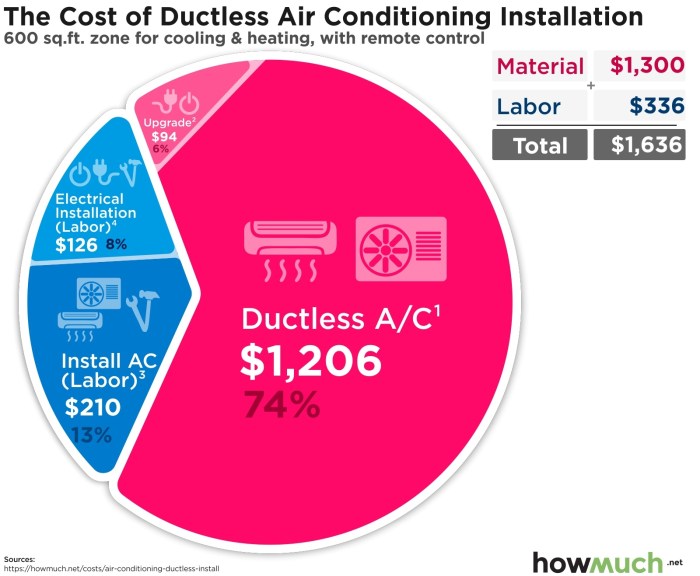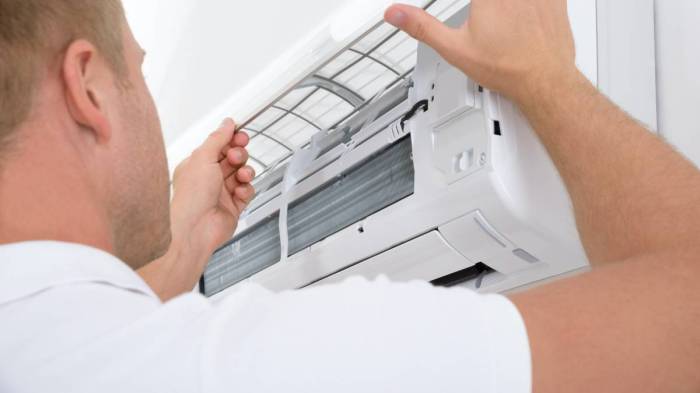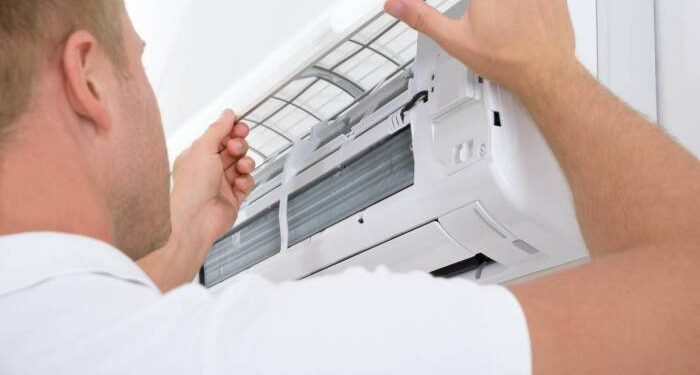When it comes to Air Conditioner Installation Costs: What to Expect, there are various factors that play a crucial role in determining how much you might end up paying. From the size of the unit to the location of installation, each aspect contributes to the final cost.
Let's delve into the details to give you a clear picture of what to anticipate when considering air conditioner installation costs.
Factors Affecting Air Conditioner Installation Costs
When it comes to the costs associated with installing an air conditioner, several factors come into play that can impact the overall price. Understanding these factors can help homeowners prepare for the expenses involved in getting a new AC unit installed.
Size of the Unit
The size of the air conditioner unit plays a crucial role in determining installation costs. Larger units typically require more time and materials to install, resulting in higher overall costs. It's essential to ensure that the size of the unit is appropriate for the space it will cool to avoid inefficiencies and additional expenses down the line.
Energy Efficiency
Energy-efficient air conditioner units may come with a higher upfront cost but can lead to long-term savings on energy bills. Installation costs for these units may also be slightly higher due to the advanced technology and components involved. However, the energy savings over time can offset the initial investment.
Complexity of Installation Location
The complexity of the installation location can significantly impact the overall costs of installing an air conditioner. If the installation site is difficult to access or requires additional modifications, such as ductwork or electrical upgrades, the installation costs are likely to be higher.
It's essential to consider these factors when budgeting for a new AC unit.
Additional Features
Incorporating additional features like smart thermostats or zoning systems can also affect installation costs. These advanced features may require specialized installation techniques or additional components, contributing to the overall price. While these features can enhance comfort and energy efficiency, homeowners should be prepared for the associated installation expenses.
Cost Breakdown: Labor vs. Equipment

When it comes to air conditioner installation costs, it's important to understand the breakdown between labor and equipment expenses. Labor costs typically involve the wages of the technicians performing the installation, while equipment costs refer to the price of the actual air conditioning unit and any necessary materials.
Labor-Intensive Tasks
- Mounting the indoor and outdoor units
- Running electrical wiring and connections
- Brazing refrigerant lines
- Testing the system for proper functioning
Type and Quality of Equipment
- The size and efficiency rating of the air conditioner can significantly impact the total cost of installation.
- Higher quality, energy-efficient units may cost more upfront but can lead to savings on energy bills in the long run.
- Additional features such as smart thermostats or air purifiers can also affect the overall price.
Additional Fees
- Permit fees: Some localities require permits for air conditioner installations, which can add to the overall cost.
- Haul-away fees: If the installation involves removing an old unit, there may be additional fees for disposal.
- Extended warranties: Opting for extended warranties or maintenance plans may increase the initial cost but provide long-term benefits.
Regional Variances in Air Conditioner Installation Costs
When it comes to air conditioner installation costs, the region where you live can have a significant impact on how much you can expect to pay. Various factors, such as local climate conditions and demand for HVAC services, can influence the variation in installation costs from one area to another.
Impact of Location on Installation Costs
In regions with extreme climates, such as very hot summers or cold winters, the demand for air conditioning and heating services tends to be higher. This increased demand can lead to higher installation costs as HVAC companies may charge more due to the higher workload.
On the other hand, in regions with milder climates where the need for air conditioning is not as crucial, installation costs may be lower.
Examples of Regional Variances
For instance, areas like Arizona or Florida, known for their scorching summers, may have higher installation costs compared to regions with more temperate climates like California or Oregon. Similarly, regions with harsh winters, such as Minnesota or Wisconsin, might see higher installation costs due to the demand for heating systems.
Effect of Local Demand on Pricing
The level of competition among HVAC companies in a specific area can also impact installation costs. In areas where there are fewer HVAC providers, companies may charge higher prices. Conversely, in regions with more competition, prices may be more competitive, leading to lower installation costs for consumers.
Cost-Saving Tips for Air Conditioner Installation

When it comes to installing an air conditioner, there are several strategies you can implement to reduce costs without compromising on quality. From scheduling installations during off-peak seasons to leveraging rebates and incentives, these tips can help you save money while ensuring a smooth installation process.
Schedule Installations During Off-Peak Seasons
Scheduling your air conditioner installation during off-peak seasons, such as fall or spring, can help you save money. During these times, HVAC companies are less busy, leading to potential discounts or promotions on installation services. Additionally, you may have more flexibility in choosing appointment times, avoiding peak demand periods that could result in higher prices.
Leverage Rebates or Incentives
Many utility companies and government agencies offer rebates or incentives for installing energy-efficient air conditioning systems. By taking advantage of these programs, you can lower the overall cost of installation. Make sure to research available rebates in your area and inquire with your HVAC contractor about eligibility requirements.
Choose the Right HVAC Contractor
Selecting a reputable and experienced HVAC contractor is crucial for ensuring cost-effectiveness during air conditioner installation. Look for contractors with positive reviews, proper licensing, and certifications. While it may be tempting to choose the lowest bidder, prioritize quality and reliability to avoid potential issues down the road.
A reliable contractor can help you navigate cost-saving options and provide efficient installation services.
Ending Remarks
In conclusion, understanding the ins and outs of air conditioner installation costs can help you make informed decisions when it comes to installing or replacing your unit. By being aware of the factors that influence pricing, you can navigate the process more effectively and ensure that you get the best value for your investment.
FAQ Section
How does the size of the unit impact installation costs?
The size of the unit directly affects the installation costs as larger units require more time and labor to install properly.
What are some cost-saving tips for air conditioner installation?
To save on installation costs, consider scheduling the installation during off-peak seasons and exploring rebates or incentives that can help lower overall expenses.
How does the local climate influence air conditioner installation costs?
Regions with extreme climate conditions may have higher installation costs due to additional requirements for insulation and system adjustments.



